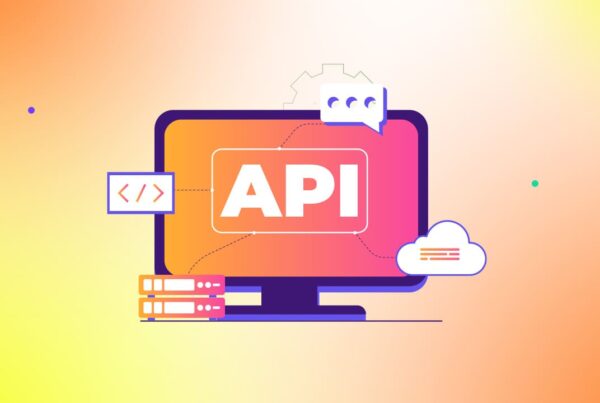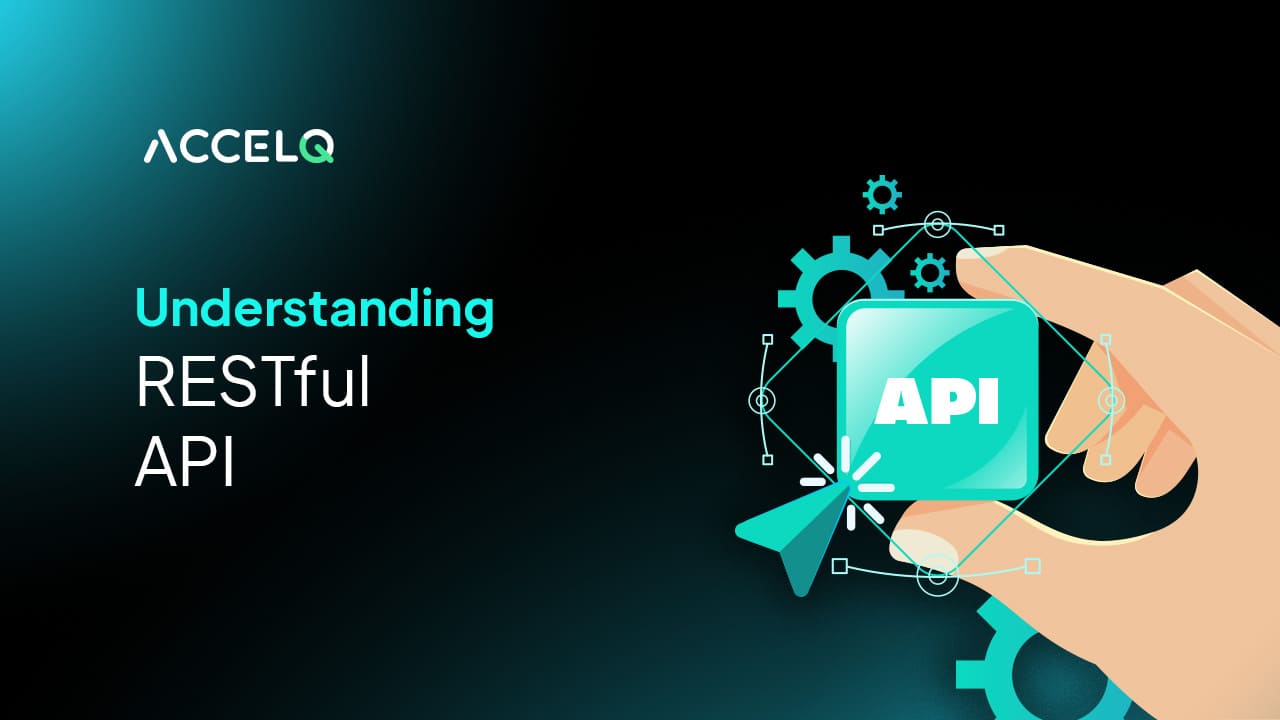What is a REST API?

Representational State Transfer (REST) is a software architecture that imposes conditions on how an API should function. This architecture was initially created as a guideline to manage communication on the Internet. REST application programming interface (API) defines the rules that you should follow to communicate with other software systems.
APIs that follow the REST architectural style are called REST APIs. Web services that implement REST architecture are called RESTful web services. The term RESTful API generally refers to RESTful web APIs. Yet, you can use rest API’s and restful API’s interchangeably.
What is a REST API vs an API?
REST API is an API that follows a set of rules for applications and services to communicate with each other. An API is a software interface that offers services to other software to improve the required functionalities. Let us go through a glimpse of REST API vs API:
| REST API | API |
|---|---|
| Definition: REST API is a specific type of API following REST architectural principles. | Definition: An API is a general set of protocols for building and integrating application software. |
| Scope: The scope of a REST API is narrower, explicitly focusing on web services that are client-server based and use a uniform interface, typically over HTTP. All REST APIs are APIs. | Scope: The scope of an API is broad and encompasses any interface that allows different software components to communicate and exchange data. Not all APIs are REST APIs. |
| Protocols: REST API primarily uses HTTP or HTTPS, making it web-centric. | Protocols: APIs utilize various protocols, including HTTP, SMTP, TCP, and others. |
Use Cases:
|
Use Cases:
|
What is a rest api used for?
REST API are frequently used in mobile and web applications to access and change data on remote systems across the Internet. Some use cases of the rest api are as follows:
- Mobile and web application development: REST APIs are fundamental to web and mobile applications. They allow web browsers or mobile apps to interact with databases to retrieve, create, update, and delete data.
- Integration of disparate systems: REST APIs facilitate seamless integration between different systems and services. Suppose a company is using a REST API to connect its internal inventory system with an e-commerce platform or 3rd party payment gateway.
- Microservices architectures: In microservices, where applications are broken down into smaller, independent services, the REST API is commonly used as the communication mechanism between these services.
- Cloud computing: REST APIs are extensively used in cloud environments to manage and interact with virtual machines, storage, and databases.
What is a RESTful API?
RESTful API is an interface that computer systems leverage to exchange information securely over the internet. Most business applications have to communicate with internal and third-party applications to perform various tasks.
For example, to generate monthly payslips, your internal accounts system shares data with your customers’ banking system to automate invoicing and communicate with an internal timesheet application. RESTful APIs support this information exchange as these APIs follow secure, reliable, and efficient software communication standards.
REST API Endpoints
Endpoints in a REST API are unique URLs representing data objects. Requests are directed to these endpoints using HTTP methods such as GET, POST, PUT, PATCH, and DELETE. When a client requests a specific endpoint, the server sends back the current version of the requested data in JSON or XML formats.
The rest api endpoint is usually a URL that includes server and resource names where the request is being made. For instance, example.com/users is an endpoint that consists of the server name (www.example.com) and the resource (user). A resource is any object that has a name and associated properties. Resource examples include users, locations, and more.
How do REST APIs work?
The working process of the REST API is as follows:
Step 1: The client sends an HTTP request to the server using a suitable method (GET, POST).
Step 2: Server receives the request, processes it according to its logic, and accesses the required resource.
Step 3: The server generates a response containing the requested status information.
Step 4: The client receives the response and processes it accordingly.
REST APIs work without saving any information from previous requests. As such, each request must include every detail the server needs to handle. This approach makes REST APIs easier to scale and more reliable.
Explore our detailed guide on REST API Test Automation in ACCELQ to learn how to create, configure, and verify REST API calls directly from the logic editor within your project.
Best Practices of REST API
REST has been widely adopted as a popular architecture style for developing APIs. Let us dive into REST API best practices that are widely accepted by developers:
1. Pagination
The data for a resource can be huge, resulting in clients fetching volumes of data when only a subset of the data is required. But by allowing pagination of data, only a specific volume of data is passed on with each response. As a result, clients can make requests for more data.
2. Versioning
Versioning is a practice to easily manage changes and updates to an API, while also maintaining compatibility with other versions of the API for clients. Here are some common API versioning approaches:
- URL versioning: The API version is included in the URL. For example, /api/v1/books indicates that this is version 1 of the API.
- Header versioning: In the API request, the version number is a custom header. For example, Accept-Version: 1.
- Content negotiation versioning: The version is negotiated based on the Accept header or the media type of the request payload.
3. Caching
Caching is a REST API practice to return data to local memory. This practice saves you from querying the database every time while retrieving data as requested by a user. You can change the way in which data is cached as per your needs.
4. Idempotency
In RESTful web services, idempotency is a practice of making the same API request many times to produce the same result as making it just once. When designing the REST APIs, you must realize that consumers can make mistakes. Consumers can write the client code in such a way that there can be repeated requests coming to the APIs. These duplicate requests can be due to timeouts and network issues. You must make sure that APIs are fault-tolerant so that duplicate requests do not leave the system unstable.
REST API Examples
RESTful API are used a lot in web and mobile apps. They help you get or change data in other systems. Here are some real-world examples:
- Banking apps also leverage REST API to help you get your account data and start transactions with remote servers.
- Digital streaming services, like Netflix and Spotify, rely on REST API to access information about media files from servers.
- IoT apps connected to sensors through the REST API enable them to check the devices and send commands.
- Social media websites, like Twitter and Facebook, use REST API to connect with other apps, permitting users to post updates.
As we explored the above examples of RESTful API, let us see a JSON response from a REST API with user profile details and a tweet as follows:

For instance, a developer requests the Twitter API to collect a user profile. The API responds with user data, such as their name, profile, follower count, and recent tweets. The client application can then show this information in a mobile app or website. This exchange happens through API integration projects, allowing systems to communicate seamlessly.
When a client requests a resource like a user profile in the above example, the API does not just send raw data. It structures the response in a format that the client can understand and work on. The common format is JavaScript Object Notation (JSON), yet the API also returns XML or even HTML in some cases.
Hence, REST API enables clients to interact with resources in a stateless manner. Each request contains everything needed, and the response provides the recent resource state at that moment.
Common REST API commands
Four methods are commonly used in a REST-based Architecture, i.e., GET, POST, PATCH, and DELETE, to perform read, create, update, and delete (CRUD) operations.
Get /users/1
POST /users
{
"name": "Anjali",
"email": "1@gmailcom"
}
DELETE /users/1
Conclusion
Effective testing ensures that REST APIs perform as intended, with reliability, efficiency, and security. Test automation tools like ACCELQ provide comprehensive support for executing and verifying REST APIs. To dive deeper, explore our guide on Testing RESTful Services in ACCELQ and learn the basic flow of testing RESTful services.
Geosley Andrades
Director, Product Evangelist at ACCELQ
Geosley is a Test Automation Evangelist and Community builder at ACCELQ. Being passionate about continuous learning, Geosley helps ACCELQ with innovative solutions to transform test automation to be simpler, more reliable, and sustainable for the real world.
You Might Also Like:
 What are Mocking and Stubbing in API Testing? A Beginner’s Guide
What are Mocking and Stubbing in API Testing? A Beginner’s Guide
What are Mocking and Stubbing in API Testing? A Beginner’s Guide
 Optimizing Your Testing Strategy with Automated API Tests
Optimizing Your Testing Strategy with Automated API Tests
Optimizing Your Testing Strategy with Automated API Tests
 Extending Test Coverage for Mobile and API
Extending Test Coverage for Mobile and API

































